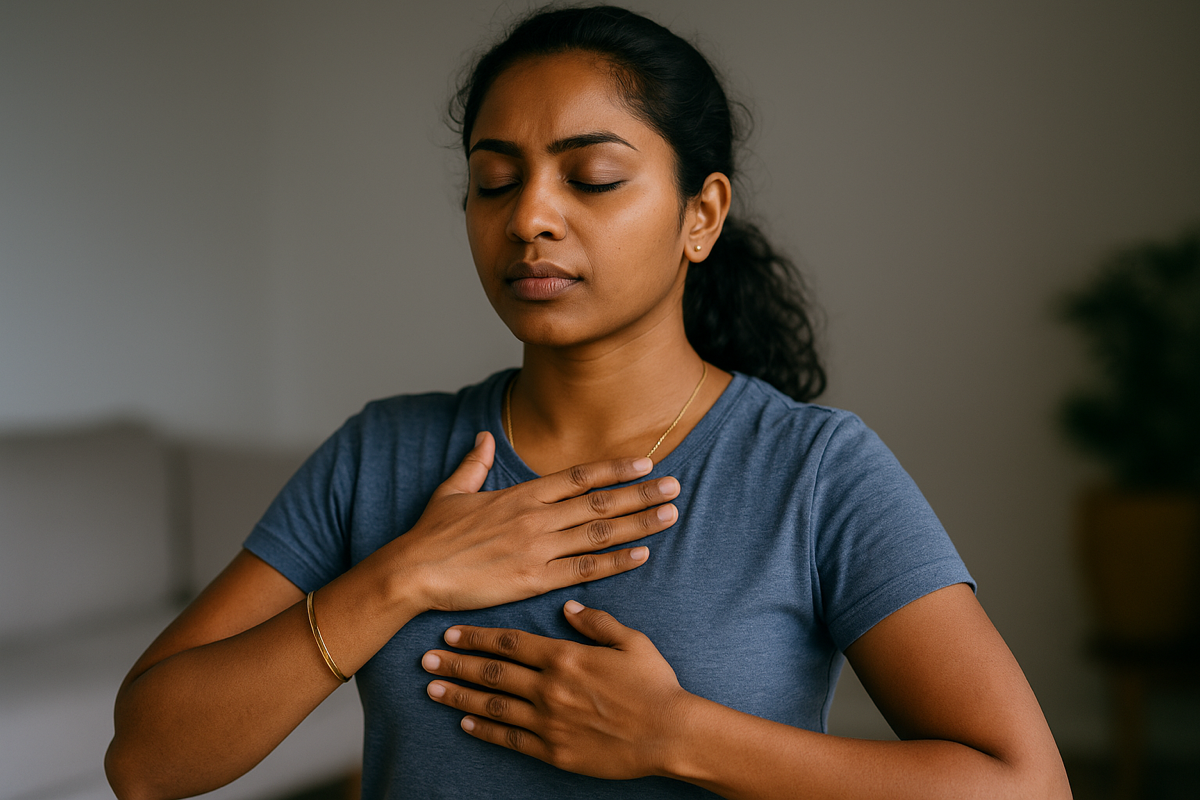Managing ADHD and anxiety can feel overwhelming at times, especially when your mind is racing and your body feels on edge. While therapy and medication can be effective tools, there’s also something simple and powerful that’s always available to you — your breath.
Incorporating intentional breathing techniques into your daily routine can help calm your nervous system, improve focus, and create a greater sense of control. Whether you’re navigating the challenges of ADHD, dealing with anxiety, or both, these practices can be a grounding force in your mental health toolkit.
Why Breathing Helps
When we’re stressed or anxious, our bodies switch into “fight or flight” mode. This can lead to shallow breathing, rapid heart rate, and racing thoughts — making it even harder to concentrate or calm down.
Deep, intentional breathing taps into the parasympathetic nervous system — the part responsible for rest and relaxation. This helps:
- Lower cortisol (the stress hormone)
- Reduce physical symptoms of anxiety
- Improve attention and cognitive control
- Regulate emotional responses
For people with ADHD, breathing can act as a gentle anchor that brings the mind back to the present moment when distractions pull it away.
4 Simple Breathing Techniques to Try
1.
Box Breathing (Also known as Square Breathing)
This method is used by Navy SEALs and athletes to stay calm under pressure.
How to do it:
- Inhale for 4 seconds
- Hold for 4 seconds
- Exhale for 4 seconds
- Hold for 4 seconds
- Repeat for 4-5 rounds
This technique is great for regulating emotions and easing anxiety quickly.
2.
4-7-8 Breathing
Designed to promote relaxation and better sleep.
How to do it:
- Inhale through your nose for 4 seconds
- Hold your breath for 7 seconds
- Exhale slowly through your mouth for 8 seconds
- Repeat for 3-4 rounds
This pattern slows your heart rate and quiets the mind — perfect before bed or during a stressful moment.
3.
Alternate Nostril Breathing (Nadi Shodhana)
A traditional yogic practice that promotes balance between the brain’s hemispheres.
How to do it:
- Close your right nostril with your thumb and inhale through your left nostril
- Close the left nostril with your ring finger and exhale through the right
- Inhale through the right nostril
- Close the right and exhale through the left
- That’s one round — repeat for 5-10 rounds
This helps improve focus and reduce anxiety in moments of overwhelm.
4.
Mindful Belly Breathing
A gentle, everyday breathing exercise that’s ideal for people with ADHD.
How to do it:
- Sit or lie down comfortably
- Place one hand on your chest and one on your belly
- Inhale through your nose, feeling your belly expand (not your chest)
- Exhale slowly through your mouth
- Continue for 3-5 minutes, keeping your attention on the movement of your belly
This promotes self-awareness and brings you into the present.
Tips for Success
- Start small: Even just one minute of breathing can help.
- Make it a habit: Try pairing it with existing routines like brushing your teeth or winding down before bed.
- Use reminders: Set gentle notifications on your phone to pause and breathe throughout the day.
- Don’t judge your mind: It’s normal for your attention to wander — just gently bring it back to your breath.
Final Thoughts
Breathing might seem too simple to be effective — but that’s the beauty of it. It’s free, always accessible, and incredibly powerful when practiced consistently.
If you’re living with ADHD or anxiety, building even a short breathing practice into your day can provide a much-needed sense of calm and clarity.

